The Hubble Space Telescope has provided a dramatic and colorful close-up look at R Aquarii, one of the most rambunctious stars in our galaxy, weaving a huge spiral pattern among the stars.
Tag: NASA
Sandia tests heat shields for space
For decades, Sandia National Laboratories’ National Solar Thermal Test Facility has harnessed the power of the sun to expose aerospace materials to intense heat, replicating the harsh conditions of faster-than-sound flight and atmospheric reentry to ensure the materials’ ability to protect the rest of the vehicle. The most recent of these tests is in support of two exciting NASA missions.
NASA’s Hubble Watches Jupiter’s Great Red Spot Behave Like a Stress Ball
Using Hubble, astronomers have discovered that Jupiter’s Great Red Spot (GRS) is not as stable as it might look. Hubble measurements of the GRS’s size, shape, brightness, color, and vorticity showed it can change dimensions—looking like a slightly skinnier or fatter red oval over 90 days.
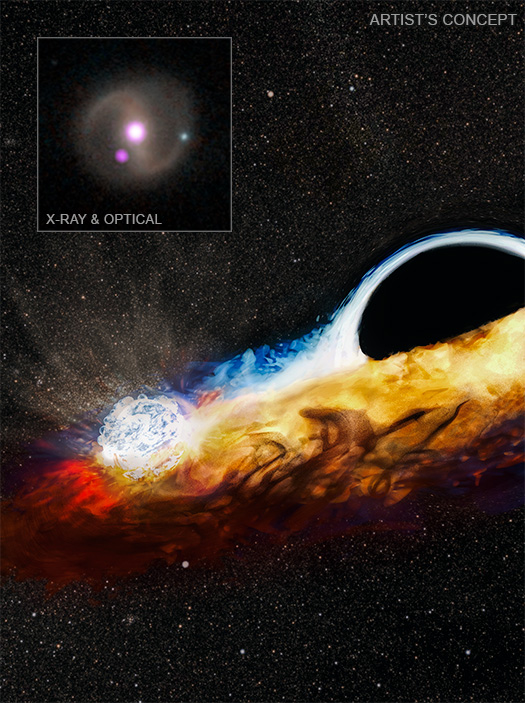
BLACK HOLE DESTROYS STAR, GOES AFTER ANOTHER, NASA FINDS
A massive black hole has torn apart one star and is now using that stellar wreckage to pummel another star or smaller black hole that used to be in the clear.
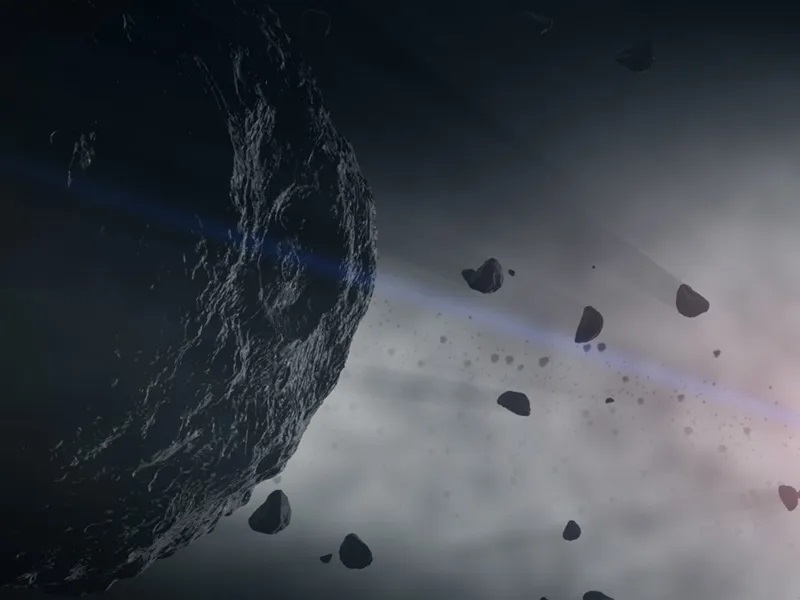
Near-Earth Asteroid Data Helps Probe Possible Fifth Force of the Universe
Near-Earth asteroid data helps probe possible fifth force of the universe
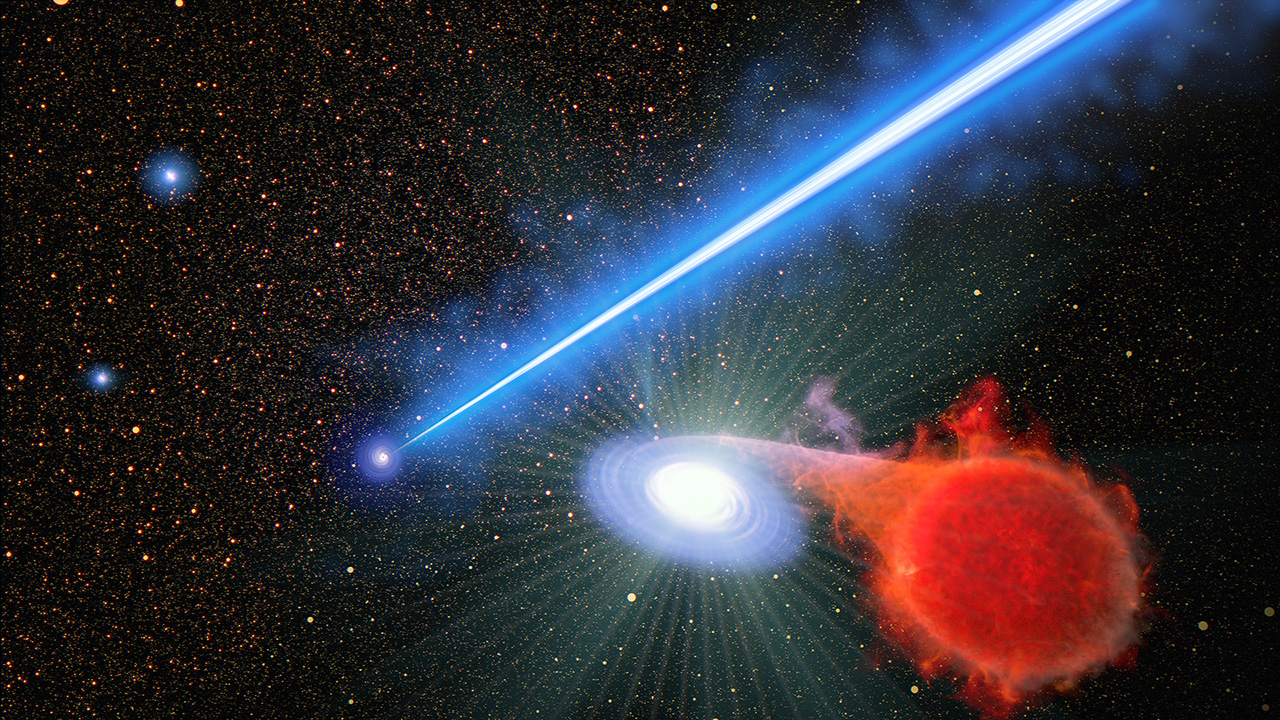
NASA’s Hubble Finds that a Black Hole Beam Promotes Stellar Eruptions
Astronomers using the Hubble Space Telescope have discovered that the blowtorch-like jet blasting from a supermassive black hole at the core of galaxy M87 seems to cause stars to erupt along its trajectory. The stars, called novae, are not caught inside the jet, but are apparently in a dangerous neighborhood nearby. Hubble found twice as many novae going off near the jet as elsewhere in the giant galaxy during the surveyed time period.
NASA’s Hubble Finds More Black Holes than Expected in the Early Universe
Using Hubble, astronomers have found more black holes in the early universe than previously thought. They went black hole hunting in the landmark Hubble Ultra Deep Field, first revealed in 2004, and in following observations to look for supermassive black holes.
UC Irvine receives record $668 million in research funding for fiscal 2023-24
University of California, Irvine scholars, scientists and physicians continue to blaze new paths to help improve the world. In fiscal 2023-24, which ended June 30, UC Irvine received the most research funding in campus history: $668 million in grants and contracts.
Cancer Research in Space for Life on Earth: Wake Forest Institute for Regenerative Medicine Selected Through International Space Station National Lab Solicitation in Partnership with NASA
The Wake Forest Institute for Regenerative Medicine (WFIRM) is honored to announce its selection for a pioneering cancer research project that will take place aboard the International Space Station (ISS).
NASA’s Hubble, Chandra Find Supermassive Black Hole Duo
Hubble and Chandra have uncovered a pair of supermassive black holes that are just 300 light-years apart. They are buried deep inside the heart of a pair of colliding galaxies that will eventually merge to make a bigger black hole.
NASA’s Hubble, MAVEN Help Solve the Mystery of Mars’ Escaping Water
A Martian mystery: What happened to the water that once covered the Red Planet? Scientists know some of it went deep underground, but what became of the rest? Hubble and MAVEN teamed up to help scientists understand the history of water on Mars.
UAH TERMINUS student team successfully launches NASA RockSat-X payload into space
Team TERMINUS from The University of Alabama in Huntsville (UAH), a part of the University of Alabama System, successfully launched a student-developed payload aboard a Terrier-Improved Malemute sounding rocket that featured two experiments designed by the UAH Space Hardware Club (SHC).
Expert Available: Boeing Starliner Astronauts Now Slated to Return Home via SpaceX in February
NASA is turning to SpaceX to bring two Boeing Starliner astronauts back from the International Space Station. The astronauts, who have been in orbit since June, will now return via the SpaceX Dragon vehicle in February. The Starliner’s test flight…
UAH HERC rover team makes STEM outreach trip to Dominican Republic hosted by INTEC University
Winning the 2024 Human Rover Explorer Challenge (HERC) provided an engineering student team at The University of Alabama in Huntsville (UAH), a part of the University of Alabama System, the opportunity to perform STEM outreach in the Dominican Republic (DR) this summer.
Launch of WVU degree in robotics engineering means cutting edge resources for students, local industry and K-12 outreach
With $1 million in NASA funding, West Virginia University is preparing its undergraduates and students across West Virginia to build the robots that will build the future.
UAH researcher wins $750K EPSCoR grant to support STROBE-X explorations of gravitational wave sources, black holes and dark matter
Dr. Sukanya Chakrabarti at The University of Alabama in Huntsville (UAH) has won a $750,000 Established Program to Stimulate Competitive Research (EPSCoR) award to support STROBE-X, a planned $1 billion probe-class NASA observatory that aims to unlock the secrets of some of the most extreme conditions in the universe.
Experiment on Photosynthesis by Scientists at PNNL Headed to the Space Station
As launch time draws near, PNNL scientists are eager to explore how plants might grow in space, where the effect of gravity is substantially weaker.
MD Anderson and collaborators to launch project studying T cells on International Space Station
The University of Texas MD Anderson Cancer Center and collaborators are initiating a research project that will send T cells to the International Space Station (ISS) to study the effects of prolonged microgravity on cell differentiation, activation, memory and exhaustion.
ND Expert: NASA’s cancellation of VIPER is a frustrating setback for lunar exploration
Last week, NASA announced it canceled its plans to send the Volatiles Investigating Polar Exploration Rover (VIPER) to the Moon’s southern polar region. The rover was meant to search for water and other resources called volatiles, such as hydrogen, ammonia and carbon dioxide, which easily evaporate in warm temperatures.Nicola Fox, associate administrator of NASA’s Science Mission Directorate, reiterated the agency’s commitment “to exploring the Moon for the benefit of humanity” through other missions.
NASA Exploration Science Forum 2024: Advancing Lunar and Planetary Exploration
The NASA Exploration Science Forum (NESF), taking place from July 23-25, 2024, at Moffett Field, CA, is a significant event for space science, bringing together experts to discuss the latest advancements in lunar and planetary exploration.
NASA’s Hubble Finds Strong Evidence for Intermediate-Mass Black Hole in Omega Centauri
Astronomers have identified the nearest black hole to Earth–weighing an estimated 8,200 solar masses–using 20 years of Hubble telescope observations. It is in the heart of the globular star cluster Omega Centauri, located 17,700 light-years away.
Pillars of Creation Star in New Visualization from NASA’s Hubble and Webb Telescope
Combining data from NASA’s Hubble and James Webb space telescopes, a team from NASA’s Universe of Learning at the Space Telescope Science Institute (STScI) in Baltimore, Maryland has produced a breathtaking new 3D visualization of the towering “Pillars of Creation” in the Eagle Nebula.
Investigating the Origins of the Crab Nebula With NASA’s Webb
NASA’s James Webb Space Telescope has provided a new view of the Crab, including the highest-quality infrared data yet available to aid scientists as they explore the detailed structure and chemical composition of the remnant. These clues are helping to unravel the unusual way that the star exploded about 1,000 years ago.
NASA’s Hubble Finds Surprises Around a Star That Erupted 40 Years Ago
Astronomers have used new and archival data from Hubble to revisit one of the strangest stars in our galaxy–40 years after it burst onto the scene as an extraordinarily bright and long-lived nova.
NASA’s Webb Opens New Window on Supernova Science
Using data from a deep Webb survey of the early universe, a team has identified 10 times more far-off supernovae than were previously known. This study is the first significant step toward more extensive surveys of ancient supernovae with Webb.
Webb Captures Top of Iconic Horsehead Nebula in Unprecedented Detail
The Horsehead Nebula is prancing across the cosmic stage in new infrared views from NASA’s James Webb Space Telescope. Extreme close-ups of the horse’s “mane” from Webb’s Near-Infrared Camera (NIRCam) and Mid-Infrared Instrument (MIRI) showcase a dynamic region that transitions from a mostly neutral, warm area of gas and dust within the nebula (represented in blue) to surrounding hot, ionized gas (red).

Hubble Celebrates 34th Anniversary with a Look at the Little Dumbbell Nebula
To celebrate Hubble’s 34th launch anniversary, NASA released the telescope’s new observation of the Little Dumbbell Nebula. Also known as Messier 76, or M76, it is composed of a ring, seen edge-on as the central bar structure, where a central red giant star burned out, and two lobes of gas and dust that are on either opening of the ring.
Hubble Goes Hunting for Small Main Belt Asteroids
Astronomers and volunteer citizen scientists used Hubble’s unique capabilities to identify a largely unseen population of very small asteroids. The treasure hunt required perusing 37,000 archived Hubble images spanning 19 years. The payoff? Finding 1,701 asteroid trails, with 1,031 of the asteroids previously uncatalogued. About 400 of these uncatalogued asteroids are smaller than 1 kilometer.
FAU Engineering Selected by NASA for University Nanosatellite Program
Florida Atlantic University’s College of Engineering and Computer Science is among eight university teams in the United States selected to work with NASA and the U.S. military to foster innovation and expertise in the small satellite sector.
Supporting the Future of Mars Exploration with Supercomputers
You may have flown a flight simulator in a computer game or at a science museum. Landing without crashing is always the hardest part. But that’s nothing compared to the challenge that engineers are facing to develop a flight simulation of the very large vehicles necessary for humans to explore the surface of Mars. The Red Planet poses innumerable challenges to astronauts, not the least of which is getting there. That’s where the Department of Energy Office of Science’s user facility supercomputers come in. Researchers at DOE’s Oak Ridge Leadership Computing Facility (OLCF) are working with NASA engineers and scientists to simulate the process of slowing down a huge spacecraft as it moves towards Mars’ surface.
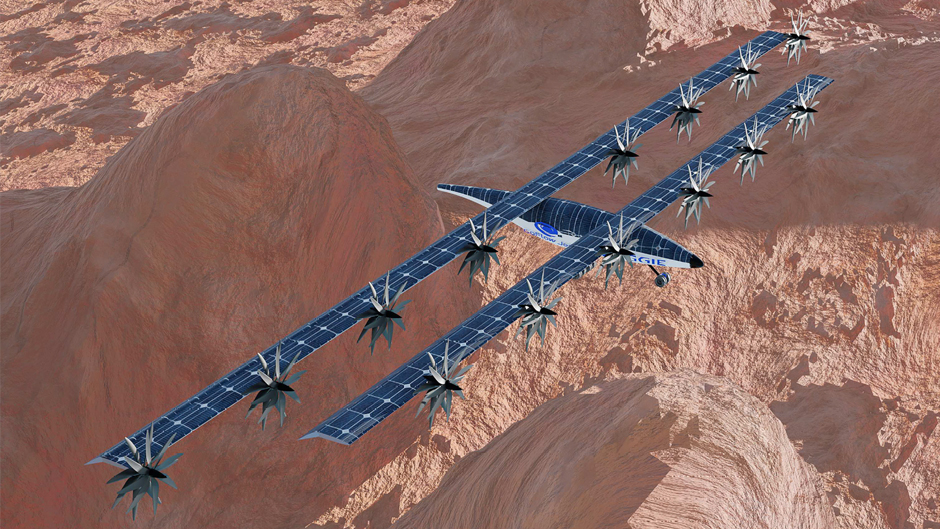
A flight out of this world
A solar-powered aircraft being developed by a University of Miami aerospace engineer could fly on Mars to help answer questions about the red planet.
NASA’s Hubble Finds that Aging Brown Dwarfs Grow Lonely
A Hubble telescope survey has found that brown dwarfs—objects smaller than stars but bigger than planets—live a lonely life as they age. Over time they lose the companion brown dwarf that was born alongside them and the objects drift their separate ways.
Nobel Laureate and NASA Astronaut to Speak at American Physiology Summit
Nobel Laureate Brian Kobilka, MD, and NASA Astronaut Jessica Meir, PhD, are among the highlighted speakers who will attend the American Physiology Summit, the American Physiological Society’s (APS) flagship annual meeting. The Summit will be held April 4–7, 2024, in Long Beach, California.
With NASA support, device for future lunar mission being developed at WashU
Scientists at Washington University in St. Louis are developing a prototype for an instrument for a future Moon mission with support from a nearly $3 million grant from NASA.
Cheers! NASA’s Webb Finds Ethanol, Other Icy Ingredients for Worlds
A new Webb study of two protostars, so young that they have not yet formed planets, has found a variety of molecules ranging from relatively simple ones like methane to complex compounds like acetic acid (familiar to cooks as an ingredient in vinegar). These molecules constitute key ingredients for worlds that might one day host life.
NASA’s Webb, Hubble Telescopes Affirm Universe’s Expansion Rate, Puzzle Persists
The best measurements from Hubble show the universe is now expanding faster than predicted based on observations of how it looked shortly after the big bang. Some scientists suggested that Hubble observations are wrong due to some creeping inaccuracy in its deep-space yardstick. However, Webb’s sharp infrared views of milepost markers known as Cepheids agree with Hubble data.
Peering Into the Tendrils of NGC 604 with NASA’s Webb
In the astronomy field, the term “nearby” is quite relative. Neighboring galaxies to our home galaxy, the Milky Way, are a few million light-years away. In contrast, some of the most distant galaxies ever detected, closer to the Big Bang, are billions of light-years away.
Measuring Air Quality to Identify Health Disparities in Communities
Dan Goldberg, an assistant research professor at the George Washington University Milken School of Public Health is an expert on climate change, environmental occupational health and global environmental health. He will lead a panel discussion along with NASA specialists at…
What Are Hubble and Webb Observing Right Now? NASA Tool Has the Answer
Space Telescope Live provides an interactive way to explore the most accurate, up-to-date, publicly available information on current, past, and upcoming observations by NASA’s Hubble and Webb space telescopes.
Webb Unlocks Secrets of One of the Most Distant Galaxies Ever Seen
Delivering on its promise to transform our understanding of the early universe, the James Webb Space Telescope is probing galaxies near the dawn of time. One of these is the exceptionally luminous galaxy GN-z11, which existed when the universe was just a tiny fraction of its current age. One of the youngest and most distant galaxies ever observed, it is also one of the most enigmatic. Why is it so bright? Webb appears to have found the answer.
Missouri S&T spacecraft engineering experts available for comment
Spacecraft engineering experts from Missouri University of Science and Technology are available to discuss the first U.S. spacecraft successfully landing on the moon in over five decades. Dr. Hank Pernicka, Curators’ Distinguished Teaching Professor of aerospace engineering, has been a…
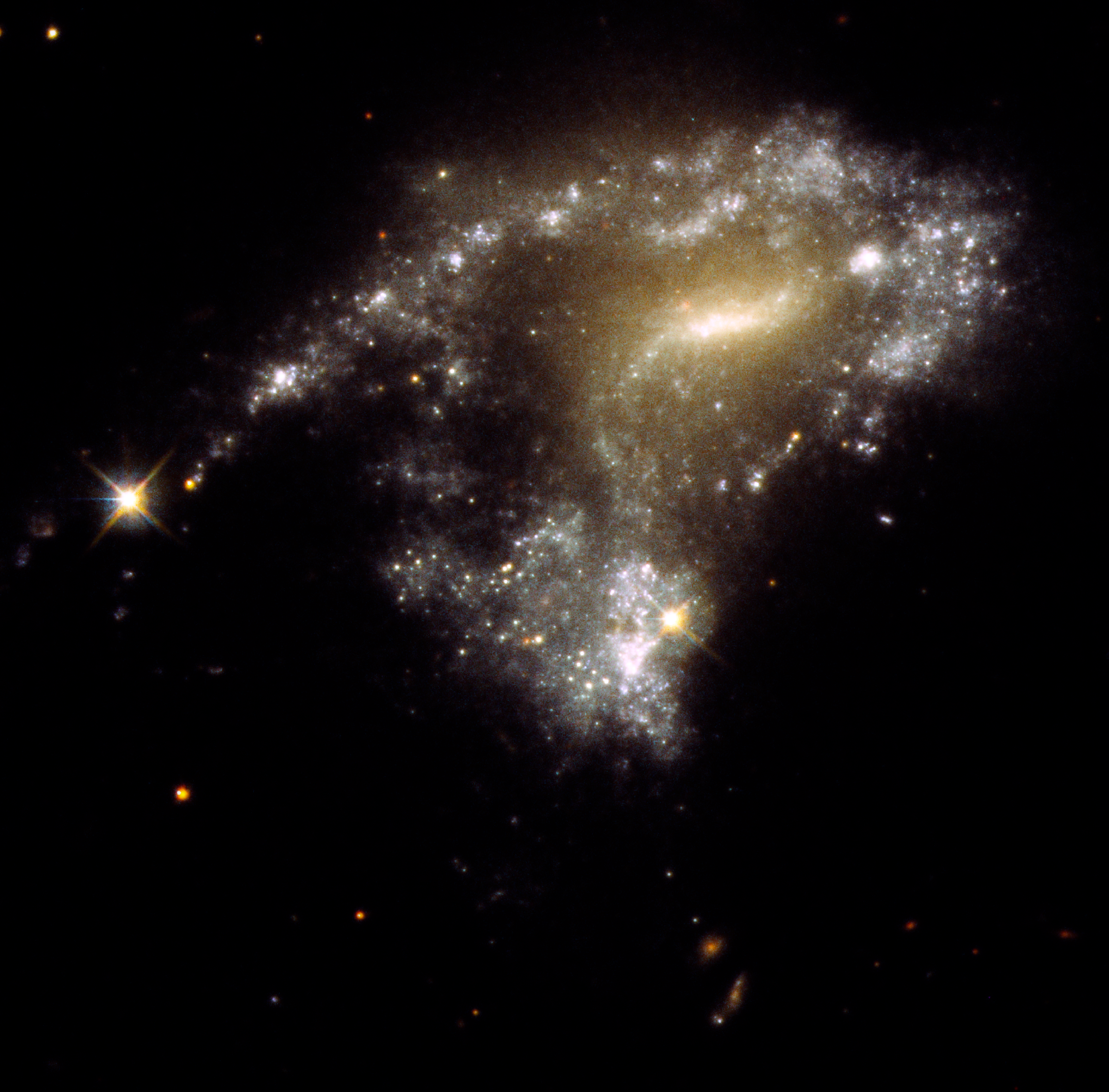
NASA’s Hubble Traces ‘String of Pearls’ Star Clusters in Galaxy Collisions
When galaxies go bump in the night, they cook-up new generations of stars that might otherwise have never been born. These close encounters between galaxies cause a gravitational tug-of-war.
El Observatorio Rubin impulsará una nueva era en misiones espaciales sin salir de la tierra
El Observatorio Vera C. Rubin ayudará a los científicos a identificar objetivos intrigantes para dar prioridad a futuras misiones espaciales, mediante la detección de millones de nuevos objetos en el Sistema Solar y revelar, con el mayor detalle jamás visto, el contexto más amplio en el que existen.
Rubin Observatory will Inspire a New Era in Space Missions without Ever Leaving the Ground
Vera C. Rubin Observatory will help scientists identify intriguing targets to prioritize for future space missions by detecting millions of new Solar System objects, and by revealing — in more detail than we’ve ever seen — the broader context in which these objects exist.
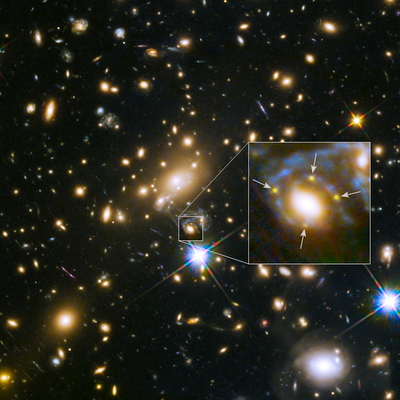
NASA’s Roman to Use Rare Events to Calculate Expansion Rate of Universe
With a panoramic view 200 times larger than the Hubble Space Telescope’s infrared view, the sheer amount of data captured by the upcoming Nancy Grace Roman Space Telescope will change the landscape of astronomy.
Surgical robot developed at Nebraska launches into space
A surgeon’s hands could stretch 250 miles above Earth, should an upcoming test of a miniaturized surgical robot aboard the International Space Station prove successful.
Researchers spying for signs of life among exoplanet atmospheres
The next generation of advanced telescopes could sharpen the hunt for potential extraterrestrial life by closely scrutinizing the atmospheres of nearby exoplanets, new research suggests.
Dr. Jennifer Lotz Appointed Space Telescope Science Institute Director
The Association of Universities for Research in Astronomy (AURA) is pleased to announce the appointment of Dr. Jennifer Lotz as the Director of the Space Telescope Science Institute (STScI). Dr. Lotz will begin her five-year appointment as STScI Director starting February 12, 2024.
NASA’s Webb Makes First Detection of Heavy Element from Star Merger
Using Webb’s spectacular sensitivity, scientists captured the first mid-infrared spectrum from space of a kilonova, which marked Webb’s first direct look at an individual heavy element from such an event.
SMU prof and NASA collaborators awarded patent for Alexa-like virtual research assistant
NASA sensors scattered across land, sea, and space have collected hundreds of terabytes of Earth science data over the past four decades. Imagine if a digital assistant like Alexa or Siri, powered by artificial intelligence (AI), could quickly and easily sift through that data to answer scientific questions for researchers.